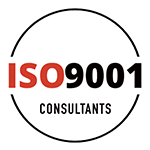ISO 9001 is all about boosting quality in businesses. It sets a clear framework that helps organisations manage and improve the quality of their products and services. But that’s not all it does. ISO 9001 also helps businesses spot and handle potential risks. By focusing on quality management, it opens doors to effective risk management practices.
Understanding how ISO 9001 works can make a big difference. When companies follow these standards, they create a solid base for identifying risks and finding ways to deal with them. This means fewer surprises and more control over how things are done. In this blog, we will delve into how ISO 9001 works hand-in-hand with risk management principles to benefit businesses.
Understanding ISO 9001 and Risk Management
ISO 9001 is an international standard that focuses on quality management systems. Its goal is to help organisations ensure their products and services consistently meet customer and regulatory requirements. By applying these standards, companies can achieve greater efficiency, enhanced customer satisfaction, and improved organisational performance.
The role of ISO 9001 in risk management is essential. The standard encourages organisations to take a proactive approach by identifying potential risks that could affect their ability to deliver quality. This forward-thinking mindset helps businesses anticipate problems before they arise, allowing them to handle issues swiftly and effectively.
ISO 9001 incorporates risk management principles through its systematic approach. It guides organisations to assess potential risks by examining their processes, operations, and even external factors affecting their business. By integrating risk management into the overall quality management system, companies can seamlessly manage both quality and risks across all functions.
Additionally, addressing risks as part of the ISO 9001 framework means continually monitoring and adapting processes. Businesses get the tools they need to establish a comprehensive risk management plan, which includes identifying risks, evaluating their likelihood, and determining their potential impact. With these insights, organisations can prioritise risk responses and allocate resources efficiently.
Identifying Risks with ISO 9001
Identifying potential risks is a key part of ISO 9001 procedures. It involves a thorough examination of various factors that might pose challenges to product or service quality. By uncovering these risks early, companies can take corrective actions to prevent undesirable outcomes.
The risk identification process in ISO 9001 includes several steps:
1. Process Analysis: Examine each business process to determine where risks might arise. This analysis considers every stage, from procurement and production to delivery.
2. Stakeholder Feedback: Engage with stakeholders, including customers, employees, and suppliers, to gain insights into potential risks they might foresee.
3. Review of Past Incidents: Study past issues or challenges the organisation has faced to understand where risks have occurred before. This helps in recognising patterns or recurring problems.
4. SWOT Analysis: Use SWOT (Strengths, Weaknesses, Opportunities, Threats) analysis to evaluate internal and external factors that could influence the business.
5. Industry Benchmarks: Compare organisational processes with industry benchmarks to identify variations that could indicate risks.
Using these tools and techniques ensures a comprehensive approach to risk identification. By understanding where risks can originate, organisations can better prepare and protect themselves. This strategy not only safeguards product quality but also reinforces overall business resilience. ISO 9001’s structured methodology serves as a reliable guide in identifying and managing risks effectively.
Mitigating Risks Through ISO 9001 Framework
Implementing ISO 9001 standards is an effective way to reduce organisational risks. This framework promotes a structured approach to managing quality, which inherently includes addressing potential risks. By adopting ISO 9001, businesses can establish comprehensive procedures that help identify, analyse, and mitigate risks before they escalate.
One key strategy within ISO 9001 is the emphasis on process control. By setting clear procedures and ensuring employees follow them, organisations can minimise the likelihood of errors that lead to risks. For example, having a methodical approach to quality checks ensures that products and services meet required standards, reducing the chance of defects reaching the customer.
Risk mitigation strategies within ISO 9001 also involve engaging employees at all levels. Encouraging input from staff members often leads to the early detection of potential problems. This collaboration fosters a proactive culture where risks are addressed collaboratively and efficiently.
Another example is the use of data-driven decision-making. ISO 9001 encourages businesses to use performance data to inform decisions. By analysing trends and performance metrics, organisations can anticipate potential issues and adjust processes accordingly to mitigate risks.
Supplier management is another critical aspect. Establishing robust criteria for supplier selection helps manage the risk associated with sub-par goods or services that can affect the overall quality delivered to the customer.
Continuous Improvement and Monitoring
ISO 9001 ensures that businesses keep improving their risk management practices through regular monitoring and continuous improvement. The standard encourages a cycle of ongoing assessment where organisations are committed to making incremental enhancements over time.
Continuous improvement is embedded in the ISO 9001 ethos, where companies are encouraged to not only maintain current standards but strive for better outcomes. This involves setting realistic and attainable goals, measuring performance against these goals, and adapting processes to achieve them.
Regular updates and reviews are vital in maintaining effective risk management practices. ISO 9001 advocates for scheduled internal audits and management reviews to identify areas needing refinement. This regular scrutiny ensures that processes remain relevant and effective in managing evolving risks.
The importance of feedback cannot be overstated. By gathering input from internal audits and customer feedback, organisations can adjust their risk mitigation strategies. This feedback loop empowers businesses to be agile and responsive to change, which is crucial in a dynamic market environment.
For continuous improvement to be successful, there must be a commitment from leadership to foster a culture that values adaptability and innovation. ISO 9001 provides the framework for this mindset, encouraging all team members to participate in the ongoing journey of risk management and improvement.
Conclusion
ISO 9001 plays a pivotal role in effective risk management, offering a robust framework to identify, mitigate, and continuously monitor risks. By incorporating these standards, businesses enhance their process efficiencies and build stronger internal controls, which leads to reduced risks and improved performance. Regular review and update cycles keep this risk management approach dynamic, ensuring that businesses can effectively respond to changes and emerging threats.
This commitment to continuous improvement not only safeguards businesses but also builds trust with stakeholders who value reliability and quality. By embracing the ISO 9001 framework, organisations not only manage risks but also set the foundation for long-term success and sustainability in their operations.
ISO 9001 Consultants stands ready to assist you in implementing these essential standards. Our team of experts will guide you through the process, providing insights and strategies tailored to your needs. Connect with us to enhance your risk management practices and unlock the full potential of ISO 9001 in your organisation.








Users Comments
Get a
Quote